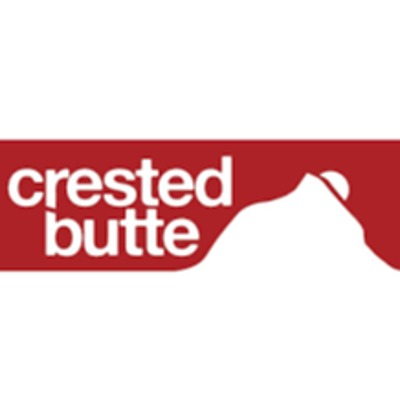Destimetrics: Occupancy At Mountain Destinations Up Slightly From Last Month

At the halfway point of summer, lodging properties in mountain destinations are enjoying a strong overall seasonal performance, but lacking the impressive year-over-year growth figures posted in the past decade. Eighteen destinations across six western states reported a slight recovery from last month’s figures in the DestiMetrics’* Market Briefing released yesterday by Inntopia. However, aggregated occupancy remained down for the six-month summer season.
Actual aggregated occupancy during July dipped a scant 0.3 percent compared to July 2018 but with a 2.6 percent increase in the Average Daily Rate (ADR) that offset lower occupancy, revenues were up 2.3 percent in a year-over-year comparison to July 2018.
Summer occupancy continued the softening pattern first reported last month. As of July 31, occupancy is down 2.3 percent compared to this time last summer with lower occupancy still showing up in five of the six summer months with only September showing a slight uptick compared to last year—a modest 1.6 percent. October is showing the most visible occupancy decline—down seven percent from this time last year. However, ADR is continuing to claw out modest gains and is maintaining an aggregated 3.4 percent increase that also continues to blunt the effects of the declining occupancy. When combined, the moderately rising daily rates are allowing lodging properties to eke out an 0.9 percent increase in revenues for the summer.
“With half the summer behind us, we our reminding our lodging partners that our top concern right now is the slight, but sliding, occupancy figures,” reported Tom Foley, senior vice president of Business Operations and Analytics for Inntopia. “Over the past 10 years we’ve enjoyed a summer season with room rate and revenue gains that have been consistently outpacing economic growth,” he continued. “But that history may be catching up as occupancy declines this summer—even with softer year-over-year rate gains and that signals a shift in summer performance that we'll have to call a pattern if it continues much longer.”
Although summer figures are solid yet uninspiring, the first look at bookings made in July for the next six months reveal a more optimistic picture. July bookings for arrivals in July through December are up an aggregated 9.8 percent compared to the same time last year. The most striking July booking figures were for arrivals in the month of October, down 13.7 percent, while bookings made for arrivals in the month of December were up an impressive 24.7 percent. The significance is because the October decline doesn’t represent high volume, while the December surge reflects positive impressions of excellent snow conditions last December—and a heartening level of growth in a typically well-booked month because of holiday vacations.
Economic indicators can also play a role in discretionary spending, including travel. On July 31, the Dow Jones Industrial Average (DJIA) posted its single highest monthly closing ever at 27,244.7 points and finishing 2.4 percent ahead of last month’s (June’s) previously set all-time record. Credit for the late-month surge was given to the Federal Reserve Bank for cutting the prime interest rate by a quarter percent and stimulating investors.
“Like last month, much of the Dow’s positive performance during July is masking some significant economic concerns that are currently dominated by trade issues,” cautioned Foley. “The US-China trade dispute continues to intensify under the threat of new tariffs and that is creating uncertainty and volatility in various market sectors.”
In a sharp shift from last month’s report, the Consumer Confidence Index (CCI) rose a striking 9.2 percent in July to close the month at 137.5 points and reached its highest level in 2019 and to land just shy of the most recent high-water mark in October 2018 when it reached 137. 9. However, wide swings in the CCI have become the norm in the past 12 months as consumers react to rapidly changing economic news reports. The Unemployment Rate remained unchanged during July at 3.7 percent and marks the second consecutive month that new job creation figures met analysts’ expectations.
“After approximately 10 years of consistently strong year-over-year revenue growth during the summer season at mountain destinations, the relatively anemic growth in revenues this summer is in stark contrast to the meteoric financial and consumer growth in other segments,” Foley observed. “It would be expected that in these conditions, room rates would not result in consumer pushback, but even the relatively modest rate growth in 2019 is pushing year-over-year occupancy down. We’re monitoring how rate pressure, inventory pressure, consumer pushback on rising rates, and erratic market forces are combining to create some slight cooling on a decade of impressive growth in mountain lodging,” concluded Foley.
NOTE: While this report is for July data, it is worth noting that in the past 48 hours, markets are down close to 1800 points from the July close in response to the Aug. 14 sinking of treasury bond yields—a historically accurate sign of potential recession. The July lodging performance data reported above was not impacted by that development.
*DestiMetrics, part of the Business Intelligence platform for Stowe-based Inntopia, tracks lodging performance in resort destinations. They compile forward-looking reservation data each month and provide individualized and aggregated results to subscribers at participating resorts. Data for western resorts is derived from a sample of approximately 290 property management companies in 18 mountain destination communities, representing approximately 30,000 rooms across Colorado, Utah, California, Nevada, Wyoming, and Idaho and may not reflect the entire mountain destination travel industry. Results may vary significantly among/between resorts and participating properties.













